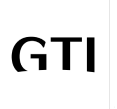What is web accessibility standards?
Web Standards have been around pretty much since the Internet started. I don’t have in mind any aspect of the World Wide Web that hasn’t been standardized so far. Despite this fact, the compliance of many standards were loosely followed for years until recently, let’s say the last 5 years perhaps. The more the population becomes increasingly Web savvy, the more awareness there is. Nowadays, the trendiest aspect of Web Standards is probably Accessibility Standards.
The web accessibility standards are a list of suggestions that became an ISO standard (around 2012). It makes content accessible to a wider range of people with disabilities, including blindness and low vision, deafness and hearing loss, learning disabilities, cognitive limitations, limited movement, speech disabilities, photosensitivity and combinations of these.
(Source)
Currently WCAG 2.0 has 3 levels of compliance: A, AA, and AAA. In short, the higher they get the more demanding it becomes. If for example we take a Guideline 1.4 that conveys that content must be distinguishable, then the 3 levels of that rule will imply the following improvements:
- Level A: Colour is not used as the only visual means of indicating actions, prompting responses or distinguishing visual elements.
- Level AA: Text and images of text must have a contrast ratio of at least 4.5:1.
- Level AAA: Text and images of text must have a contrast ratio of at least 7:1.
Of course there are exceptions to these rules as clarified in the WCAG conformance requirements page: “It is not recommended that Level AAA conformance be required as a general policy for entire sites because it is not possible to satisfy all Level AAA Success Criteria for some content.” That said, the level of conformance really depends on the audience, although the highest the broader since the highest level includes the lowest.
Thus, as stated, following WCAG is important because it gives content’s access to people with disabilities. Some sectors of society (Government, Education, Health, Insurance, corporations engaged in social responsibility, etc.) are compelled or in their best interest to deliver information and services to a wider population range. Of course, this represents an
additional effort for Web designers and developers who must validate their work all along the production process with their choice from a vast array of tools for that purpose.
Writing an article about Government standards comes handy since it’s precisely governments around the world who are trying to comply more on this area than anybody else, since they must provide access to services to their populations on a wider spectrum.
Now, since we’re in Canada and it turns out we’re doing quite well in that field compared to other countries, we have enough resources to make an introspective tour through our governments’ websites at least at federal and provincial level.
FEDERAL GOVERNMENT
Given that the Treasury Board of Canada Secretariat provides advice and makes recommendations to the Treasury Board committee of ministers on how the government spends money on programs and services, how it regulates and how it is managed. In this character, it provides access to all Treasury Board-approved policies and related instruments for organizations across the Government of Canada. So, this government agency oversees regulating the Web Accessibility Guidelines of the Canadian Government (see specific links in the table at the end).
Now, based on the resources found at the writing of this article, the Government of Canada largely exceeds the provinces’ efforts. Not only does it follow numerous standards but they also have an out-of-the-box ready to use framework that comply with such accessibility standards.
But how did they get to his point? Well, unfortunately our government got into the WCAG wagon long ago through a lawsuit: Jodhan vs. Attorney General of Canada. So, in order to avoid disability discrimination lawsuits, they got into developing their own open source framework for the Federal Government use (and for everybody else, of course, being an open source project). The outcome of that effort is the Web Experience Toolkit (WET), a quite impressive framework based on Bootstrap with variants for Drupal, WordPress and more.
Most, if not all, federal government websites comply with WCAG 2.0 AA thanks to the WET framework.
PROVINCES AND TERRITORIES
Most of the Canadian provinces websites comply with WCAG 2.0 AA or are in the progress of doing so. This province compliance (or non-compliance) refers only to the province
government’s website and not to its cities and municipalities, which in most cases do not comply to the aforementioned level.
For example, the Quebec Province even has its own Web standard name (based on WCAG at different levels).
British Columbia, not only follows WCAG, but also has its own Content Management System although for instance Vancouver doesn’t follow it. It only states that “The site is designed with consideration for people unable to use a mouse” or that “to assist our visitors who are visually impaired or blind, our website is compatible with a screen-reading software”.
Ontario has its own policy for overall accessibility policy named Accessibility for Ontarians with Disabilities Act (AODA) with Toronto, Ottawa, Kingston following, and loosely followed by smaller municipalities at least on web-related matters.
For a more detailed outlook on all provinces let’s present this information on a table, although please be advised that the table below reflects findings to the end of December 2016, so as time passes links could reflect updates.
Defined (by Dec. 2016)Federal Government
Conforms to WCAG 2.0 AA |
In Progress (by Dec. 2016)Manitoba No statement of WCAG conformity |
Unknown (by Dec. 2016)New Brunswick No accessibility page found |
| Alberta
Conforms to WCAG 2.0 AA |
Prince Edward Island
Conforms to WCAG without specifying level (Oct 2016) |
Yukon
No accessibility page found |
British Columbia
Conforms to WCAG 2.0 AA |
Saskatchewan
No statement of WCAG conformity |
Nunavut
No accessibility page found |
| Ontario
Conforms to WCAG 2.0 AA |
Northwest Territories
No statement of WCAG conformity |
|
Quebec
Custom made standard based on WCAG 2.0 A or AA depending on the case. |
Nova Scotia
Conforms to WCAG without specifying level (Oct 2016) |
|
| Newfoundland and Labrador
Conforms to WCAG 2.0 AA |
Discover our latest digital strategies. Subscribe to our newsletter!



